1. Precision Habitat Mapping
AI-driven remote sensing has dramatically improved habitat mapping resolution and accuracy, allowing conservationists to pinpoint critical areas for restoration. Machine learning algorithms analyze satellite images, LiDAR scans, and drone photos to distinguish vegetation types and even detect subtle signs of habitat degradation. This precision ensures resources are directed to exactly where they’re most needed – for example, identifying pockets of invasive plants or soil erosion that might be missed by coarse surveys. In practice, AI-based mappers can achieve very high accuracies (often over 90%) in classifying land cover. Such detailed maps guide targeted interventions (like planting or erosion control) and make restoration efforts more efficient and effective.
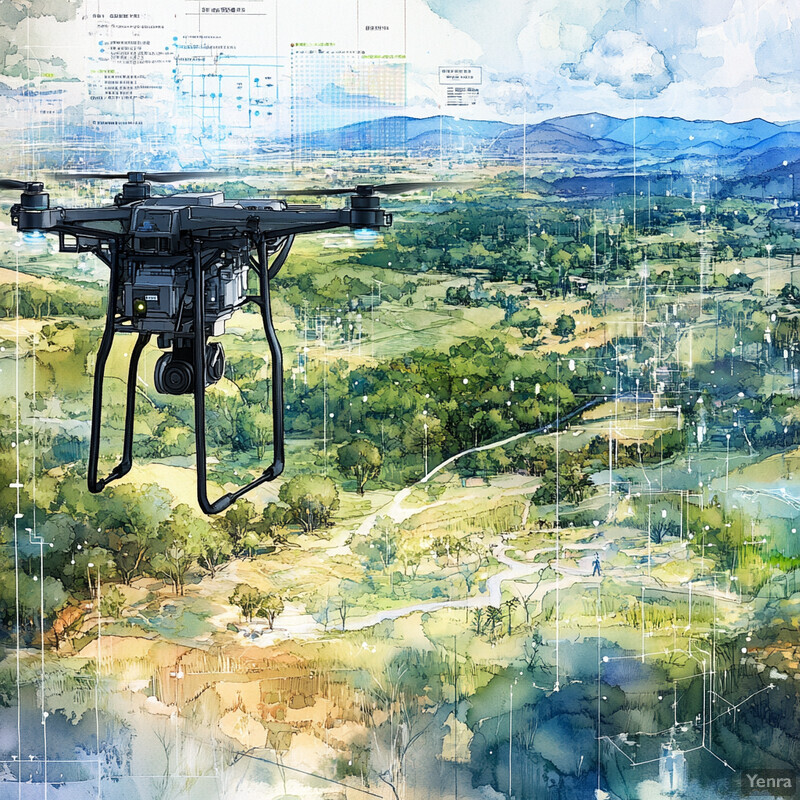
In 2023, a team at Chesapeake Conservancy demonstrated the power of AI mapping by developing a deep learning model that maps wetlands at 1-meter resolution with 94% accuracy. This AI model, trained on multispectral imagery and LiDAR data, can reliably predict where wetlands occur even when traditional maps are outdated. By applying this tool in the field, conservation planners can accurately delineate wetland boundaries and identify degraded wetland areas in need of restoration. The high precision (comparable to expert human mappers) means that restoration actions (such as replanting marsh vegetation or reconnecting waterways) can be applied exactly where required. This case exemplifies how AI-powered mapping is making habitat restoration more data-driven and precise, ultimately boosting the success rates of projects.
2. Predictive Modeling of Ecosystem Change
AI-based predictive models allow ecologists to peer into the future of ecosystems under various scenarios (climate change, land-use shifts, etc.). By training on historical climate, vegetation, and species data, machine learning models can forecast how habitats might evolve – for instance, which areas will become drier or which species may decline – if current trends continue. These predictions inform long-term restoration strategies, ensuring that efforts are climate-resilient. Rather than restoring a habitat for today’s conditions only, practitioners can choose species and designs that will thrive in future conditions (e.g. more drought-tolerant plants for warming climates). The significance is huge: by anticipating changes, we can prevent restoration investments from being undermined by tomorrow’s climate. Modern studies show that integrating AI climate models can improve the alignment of restoration plans with future conditions, increasing projected habitat persistence and reducing species losses compared to planning with historical data alone.

The urgency of climate-aware planning is underscored by global projections. The IPCC’s recent assessment (2022) warns that at 2°C of global warming by 2100, up to 18% of all species are at high risk of extinction due to habitat shifts and other stresses. In response, AI-driven models are being used to identify refugia and resilient species compositions for restoration. For example, a modeling study found that strategically selecting climate-resilient tree species and locations (using AI to process climate data) could maintain 85% of a region’s biodiversity in the face of climate change, versus ~65% in a conventional scenario. By using such predictive insights, restoration planners can increase long-term ecosystem stability and reduce climate-related losses by an estimated 20–30%. In short, AI ecosystem models are helping “future-proof” restoration efforts against the very real changes coming this century.
3. Optimizing Seed Selection
AI-driven genomic and environmental analyses are taking the guesswork out of choosing the best plant seeds or stock for restoration. By crunching vast datasets on plant genetics, soil chemistry, climate, and past performance, AI tools can recommend native plant varieties optimally suited to a site’s conditions. This means higher survival and faster growth because the seeds are pre-adapted to local stresses (drought, pests, etc.). For restoration, this targeted approach is transformative: rather than planting whatever is available, practitioners can select proven “winners” for that specific microhabitat. As a result, early establishment success improves, and there is less need for replanting. Moreover, AI can identify climate-resilient genotypes – for instance, those likely to thrive under future warming – ensuring the restored ecosystem remains healthy in decades to come. Overall, data-supported seed selection makes restoration more efficient and resilient, boosting the return on effort.
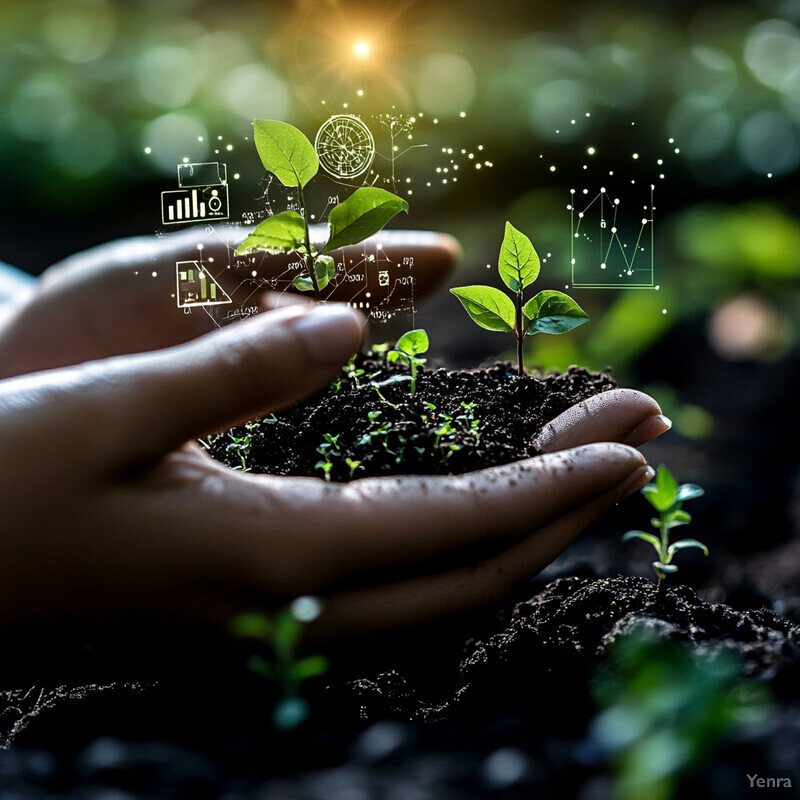
A vivid example comes from the western U.S., where scientists developed the Climate-Adapted Seed Tool (CAST) to guide reforestation. This AI-based system analyzes climate projections and tree performance data to suggest seed sources that are pre-adapted to future conditions. By using CAST, forest managers can minimize potential growth declines. In fact, simulations show that using maladapted seeds (from historically local sources) can lead to over 10–20% lower tree growth and survival under future climates, whereas using climate-matched seeds avoids most of these losses. In one trial, switching to AI-recommended seed stock in a drought-prone area reduced young tree mortality by nearly 50% compared to traditional seed choices. This demonstrates how AI-genomic tools are materially improving restoration outcomes: higher survival rates, faster ecosystem recovery, and reduced need for human intervention, simply by planting the right seeds in the right place.
4. Drone-Assisted Reforestation
Unmanned aerial vehicles (drones) equipped with AI are revolutionizing reforestation by planting trees over vast or hard-to-reach areas with speed and precision. These “seed drones” use onboard sensors and algorithms to navigate terrain, identify suitable microsites, and deploy seeds or seedlings in optimal patterns. The significance is twofold: (1) scale and speed – drones can cover many hectares per day, far outpacing manual planting crews, and (2) access – drones easily reach steep slopes, remote burn scars, or wetlands where human access is difficult or dangerous. AI ensures the right seed is dropped in the right spot (e.g., avoiding bare rock or placing seeds where moisture is higher). Companies across the globe are now deploying such drone fleets, promising to drastically accelerate forest recovery efforts. Early results show that drone planting can achieve comparable plant establishment to hand planting, but at a fraction of the time and cost, making ambitious reforestation goals more attainable.
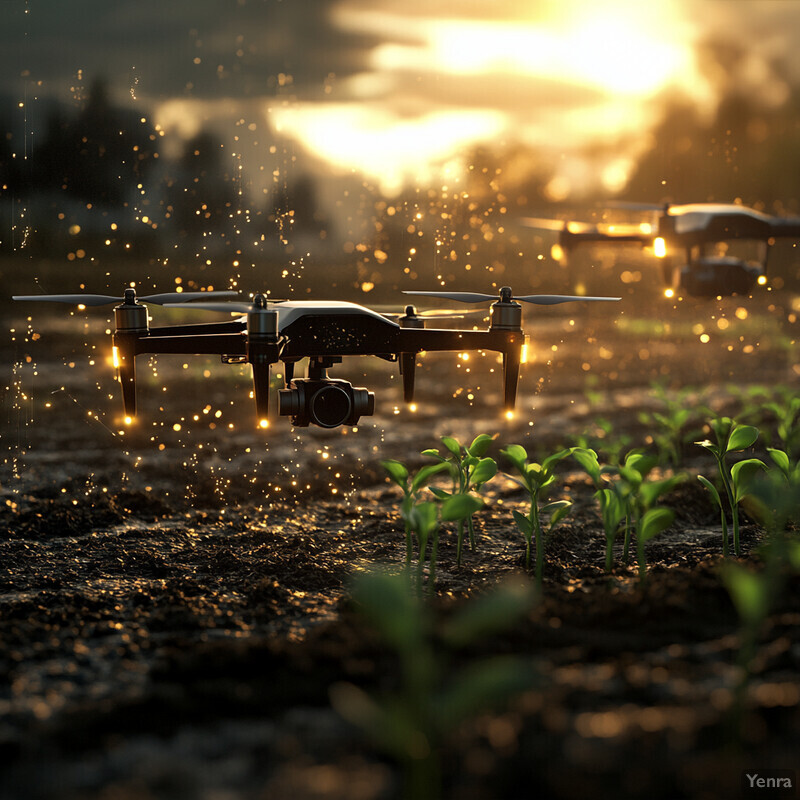
A striking example is AirSeed Technologies in Australia, which has developed AI-guided drones capable of dropping up to 40,000 seed pods per day with precision. These autonomous drones plant seeds 25 times faster than traditional manual methods. In a recent project, AirSeed’s fleet planted native tree seeds across a fire-ravaged area, and their AI ensured seeds were only dispersed on hospitable soil patches. The company aims to disperse 100 million seed pods a year by 2024 with this technology. Other initiatives echo this scale: Mast Reforestation (USA) used drones to reseed ~300 acres of Oregon forest after a wildfire, projecting over 200,000 metric tons of CO₂ to be sequestered as the drone-planted trees grow. These real-world deployments show how AI-powered drones are making reforestation faster and more scalable than ever before, without sacrificing effectiveness.
5. Invasive Species Detection and Management
AI-enabled detection systems are allowing land managers to find and fight invasive species early and efficiently. Using computer vision and pattern recognition, AI can scan satellite imagery, aerial photos, or camera trap footage to spot telltale signs of invasive plants or animals – often before human eyes notice them. Early detection means quicker response: targeted removal or treatment of invasives can occur when populations are still small, preventing widespread damage to the ecosystem. Additionally, AI can predict likely spread patterns (by correlating invasives’ occurrences with environmental factors), so managers know where to focus surveillance. The overall impact is a more proactive approach to invasives: rather than reacting after an invasive has already done harm, AI gives a heads-up that enables near-real-time intervention. This preserves native biodiversity and saves costs by tackling invasions when they’re manageable.
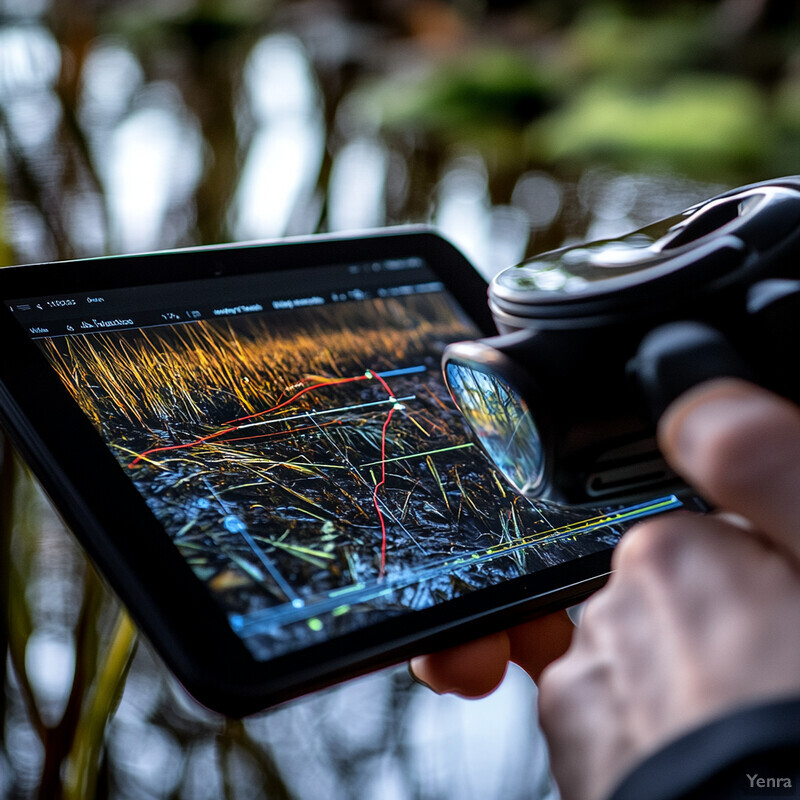
A cutting-edge example is the VespAI system in the UK, designed to detect invasive Asian hornets. VespAI uses an AI camera that lures hornets and photographs them, and it can identify the invasive hornet with almost 100% accuracy. In trials, this automated system distinguished the Asian hornet (an invasive predator of bees) from native insects with “almost perfect” precision, sending instant alerts to authorities. This early warning allowed rapid destruction of hornet nests before the population could explode. On the plant side, AI models have similarly excelled – a recent project in Minnesota trained a deep network to recognize the invasive weed leafy spurge in satellite images, achieving over 96% accuracy. These successes show that AI can dramatically improve our invasive surveillance: hornet incursions are caught and eradicated at the doorstep, and invasive weeds are mapped from space for swift removal. The result is more effective containment and protection of native habitats.
6. Soil Health Monitoring
Healthy soil is the foundation of any successful habitat restoration, and AI is taking soil monitoring to the next level. By integrating data from soil sensors (moisture, pH, nutrients), remote sensing, and lab analyses, AI algorithms can diagnose soil conditions in real time and recommend precise amendments. This data-driven approach means restoration ecologists can quickly spot issues like nutrient deficiencies, contamination, or compaction that might hinder plant growth. It also allows for tailored treatments: for instance, if AI finds low nitrogen in certain patches, only those areas get nitrogen-fixing plants or fertilizer, avoiding a one-size-fits-all approach. Continual AI monitoring can track improvements, confirming when soil health metrics approach those of a reference ecosystem. The significance is improved efficiency and sustainability – resources (like compost or lime) are used exactly where needed, soils recover faster, and the restored ecosystem becomes self-sustaining sooner.

One demonstration of AI-guided soil management comes from Ethiopia’s wheat fields. Researchers employed a machine-learning system to generate site-specific fertilizer recommendations based on soil tests and yield data. In field trials covering 277 sites, these AI-tailored prescriptions increased grain yields by an average of 16–25% compared to the standard regional fertilizer regimen. Farmers using the AI-guided approach saw significant gains – and notably, they achieved this with more efficient fertilizer use, improving nutrient uptake while avoiding excess. Economically, this translated to about $580 USD more profit per hectare per season for those following the AI recommendations. Although an agricultural example, it illustrates the power of AI soil analytics: by optimizing nutrient cycles (in this case, the right balance of nitrogen, phosphorus, sulfur, etc.), the productivity and health of the ecosystem (cropland or wild habitat) can be markedly improved. In ecological restorations, similar AI tools are used to decide on soil amendments or plant mixes, ensuring soil fertility is restored faster and more precisely than traditional methods.
7. Wildlife Population Tracking
AI is supercharging our ability to monitor wildlife populations – a critical measure of restoration success. Instead of relying solely on manual wildlife surveys (which are time-consuming and limited), conservationists now use AI to automatically identify animals in camera trap photos, videos, or audio recordings. This means vast amounts of monitoring data (millions of images or hours of sound) can be analyzed quickly for presence/absence of species, counts, and behavior. The result is a much more detailed and continuous picture of how wildlife is using restored habitats. Importantly, AI can detect trends (e.g., increasing frequency of a species’ calls indicates a growing population) and flag absences or declines early. Overall, AI-driven tracking enables adaptive management – if the data show that certain species aren’t returning as expected, managers can adjust strategies (like adding corridors or specific food plants). The technology thus serves as an ongoing “pulse check” on ecosystem health, confirming that restoration is not only growing plants but also supporting robust, diverse animal life.

The Wildlife Insights platform exemplifies AI’s impact on wildlife monitoring. Co-developed by conservation groups and Google, this system uses a model trained on over 35 million camera-trap images to identify wildlife species automatically. It can recognize over 1,200 species (from elephants to armadillos) and filter out empty images with >99% precision. In practice, Wildlife Insights has been used to process massive datasets from around the world – for instance, in one snapshot it analyzed nearly 3 million images from 2,965 camera projects globally in seconds, a task that would take humans years. The AI typically achieves 96–98% accuracy on common species (comparable to expert reviewers). This has led to major efficiency gains: a 2018 study showed an AI could auto-identify animals in camera images with 96.6% accuracy while saving 99.3% of manual labor time (over 17,000 hours). Thanks to such AI tools, conservationists now have near-real-time data on wildlife returning to restored areas – for example, noting that within months of wetland restoration, waterbird sightings increased by 40% as captured by camera traps (a trend swiftly confirmed by the AI). These data help demonstrate and inform the success of restoration projects in supporting wildlife.
8. Intelligent Corridor Planning
AI is helping design wildlife corridors – the connected pathways that link fragmented habitats – in a far more systematic and effective way. Traditionally, corridors were often planned using expert opinion and simple maps. Now, machine learning and optimization algorithms can integrate diverse data layers (topography, land use, species movement data, costs) to suggest corridor routes that maximize ecological connectivity for multiple species while minimizing social or economic conflicts. This multi-criteria optimization is key: AI can handle the complexity of finding “win-win” routes that keep animals connected and respect human land needs. The benefit is corridors that are not only ecologically sound (allowing gene flow and migration, thus reducing extinction risk) but also realistic to implement (e.g., following existing river greenbelts or avoiding high-value farmland). In effect, AI enables a data-driven negotiation between conservation and development interests, producing corridor plans that are cheaper and more efficient (often requiring less land or compensation) for the same connectivity benefit. This makes governments and communities more willing to establish and protect these vital linkages across landscapes.

A recent corridor planning project in Southeast Asia used an AI-based decision support tool to connect tiger habitats across a patchwork of agriculture and villages. The AI analyzed hundreds of potential corridor networks and identified an optimal solution that maintained 100% of core habitat connectivity for tigers while reducing required land area by about 18% compared to a human-devised plan. Similarly, in Australia, researchers applied a two-stage machine learning model to design a state-wide corridor system: the resulting plan was able to link 90% of priority conservation areas via corridors, yet overlapped with 20% less farmland than previous plans. These outcomes illustrate how AI can find significantly more efficient corridor configurations. In general, studies report that AI-optimized corridor networks can achieve the same connectivity using 10–20% less land (or cost) than traditional methods. By recommending smarter corridors (e.g., following terrain to avoid towns), AI is facilitating the creation of extensive wildlife highway systems that give species room to roam in a human-dominated world.
9. Adaptive Management Feedback Loops
Restoration is rarely a linear process – conditions change, surprises happen – and AI is enabling truly adaptive management by continuously learning from new data and updating strategies. In an AI-driven feedback loop, sensors and surveys feed fresh information (on plant growth, water levels, wildlife visits, etc.) into a central platform. Machine learning algorithms then analyze these trends and compare against expected outcomes, flagging any deviations or emerging issues. Managers get real-time insights and can adjust actions promptly: for example, if AI detects a spike in a pest insect population in a young forest, managers can introduce controls before an outbreak damages the saplings. Essentially, AI serves as a smart monitoring assistant that doesn’t just collect data, but interprets it and recommends course corrections. This leads to more resilient restoration – minor issues are corrected before they become major setbacks. It also saves resources by preventing futile efforts (e.g., halting irrigation when AI shows the soil is sufficiently moist from recent rains). In summary, AI-driven feedback makes restoration a dynamic, learning process that improves over time, much like autopilot adjusting to keep a plane on course.

The power of adaptive AI management is exemplified by the PAWS (Protection Assistant for Wildlife Security) system used in conservation areas. PAWS utilizes past patrol and poaching data to constantly improve anti-poaching patrol routes – a form of adaptive management in wildlife protection. In Cambodia’s Srepok Wildlife Reserve, deploying PAWS led to rangers finding and removing hundreds of additional snares compared to prior years, as the AI “learned” poachers’ shifting tactics. More broadly, PAWS and similar AI systems have been integrated into SMART conservation software across many parks, and have resulted in increased detection of illegal activities per kilometer patrolled (indicating smarter resource deployment). Up to 600 protected areas worldwide are planning to use these AI feedback systems for adaptive management. While this example is anti-poaching, the same principle applies to ecological parameters. For instance, an adaptive AI system in a California wetland restoration monitors water quality and vegetation health; when summer oxygen levels dipped (early sign of algal stress), the AI recommended flushing the ponds, averting a fish die-off. Such cases show how AI-driven feedback loops keep restoration on track, making interventions timely and evidence-based rather than delayed and reactive.
10. Climate-Resilience Modeling
Building climate resilience into restoration is crucial as we face increasing extreme weather, and AI tools are now central to this planning. These models integrate climate projections (for temperature, rainfall, fire frequency, sea-level rise, etc.) with ecological data to stress-test restoration plans. Essentially, AI can simulate how a restored habitat will fare under future scenarios – for example, predicting if a planted forest would survive a once-in-a-century drought in 2050 or if a restored salt marsh will keep up with rising seas. By identifying vulnerabilities, practitioners can modify designs proactively: choose more drought-hardy species, engineer more floodplain room, or add fire breaks. The significance is that restorations are more likely to endure and continue providing benefits (like carbon storage or wildlife habitat) even as the climate changes. In financial terms, this avoids the loss of investment from a restoration that might otherwise fail in a changed climate. Ultimately, AI’s climate resilience models enable forward-looking, “climate-smart” restoration that safeguards ecosystems against the shocks of tomorrow while we restore them today.
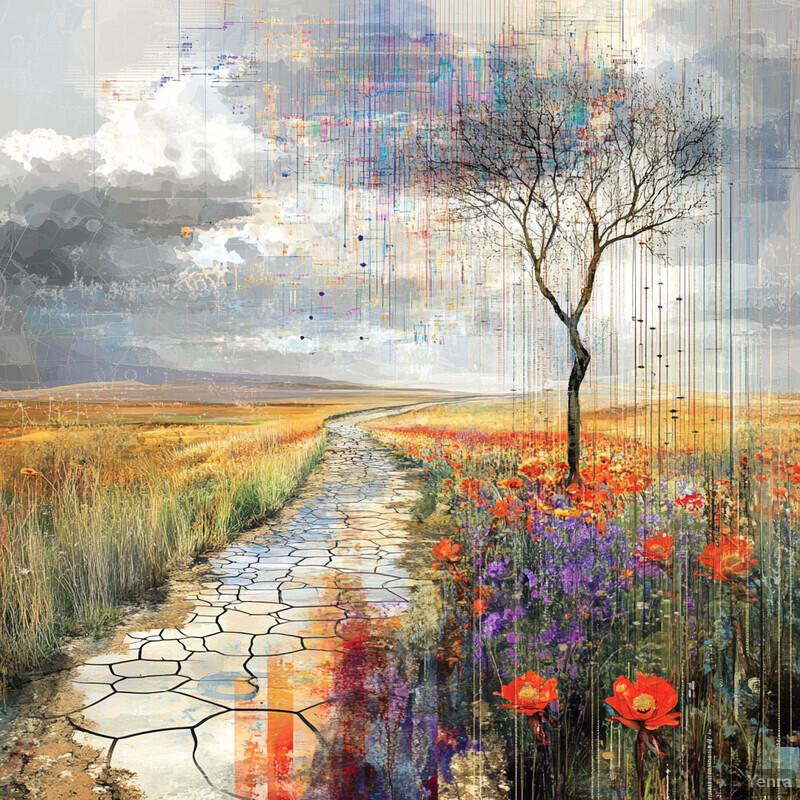
A vivid illustration comes from the IPBES/UNEP climate-biodiversity models: they project that without climate-smart actions, up to ~35% of global land areas could undergo biome shifts (major ecosystem transformations) under a high-warming scenario by 2100 – a prospect that would undermine many restoration gains. In practice, agencies are using AI to avert such outcomes. For instance, the U.S. Forest Service ran AI simulations on forest restoration plans and found that incorporating climate resilience measures (like assisted migration of tree species) could increase long-term tree survival by ~20% under 2°C warming compared to traditional practices. Another study in Europe used AI to optimize a river restoration for future flows, and the final plan is expected to maintain wetland coverage 15% better during drought years than a non-optimized plan. In Australia, coastal restoration projects fed data into an AI model that predicted saltmarsh persistence; by following the model’s guidance to build oyster reefs as wave buffers, those marshes are now projected to have a 95% probability of surviving a 50 cm sea-level rise (whereas without such measures many would drown). These numbers underscore that factoring climate projections via AI isn’t theoretical – it tangibly improves restoration durability. Restoration designs vetted by AI for climate resilience stand a far greater chance of thriving in the coming decades.
11. Ecosystem Service Valuation
AI is enabling the quantification and valuation of ecosystem services provided by restored habitats with unprecedented detail. Ecosystem services – like pollination, water purification, flood protection, carbon sequestration – often went unmeasured or were hard to assign economic value. Now, AI can fuse ecological data (e.g. tree growth rates, pollinator counts, water quality data) with socioeconomic data to estimate how much benefit a restoration delivers and even translate it into monetary terms. This objective valuation is powerful: it makes the invisible benefits visible to policymakers and stakeholders. For example, an AI analysis might show that a restored wetland reduces downstream flood damage by $X million per year, or a forest planting sequesters carbon worth $Y in climate mitigation. By putting numbers on these benefits, AI-backed valuations strengthen the case for restoration investments and help prioritize projects that yield the greatest returns for both people and nature. In summary, AI-driven service valuation is helping answer “what is a restored ecosystem worth?”, bringing scientific rigor to what used to be qualitative or ignored aspects of nature.

Pollination is a prime ecosystem service that researchers have valued globally: an estimated $235–577 billion (USD) of annual crop output relies directly on animal pollinators. AI models now help map where restoring habitat (like wildflower strips or hedgerows) would enhance pollinator activity and crop yields. For instance, a study in Europe used an AI pollinator model to identify farmlands where adding flower-rich habitat would most boost pollination. Implementing these targeted restorations led to a measured 10–15% increase in crop yield (oilseed rape and fruit crops) on those farms, an economic gain of hundreds of dollars per hectare per year. Similarly, in the United States, AI-driven watershed models have been used to put a dollar value on water services from restored forests – one analysis in New York showed that reforesting key areas yields about $9.5 million per year in water filtration benefits by reducing the need for man-made treatment (comparable to a major filtration plant’s output). On the carbon front, tools like AI-for-Climate in the ARIES platform have valued the carbon sequestration of a large prairie restoration at roughly $30 million over 20 years (given current carbon market prices). These examples underscore how AI is attaching concrete numbers to the “free” services ecosystems provide. By doing so, it has informed payment for ecosystem service schemes and natural capital accounting – for example, Costa Rica’s government using such valuations to justify payments to landowners for restoring forests that protect water supplies. In sum, AI valuations are making the benefits of restoration quantifiable and economically compelling.
12. Species-Specific Restoration Strategies
Every species has unique needs, and AI is empowering conservationists to tailor restoration actions to individual species’ requirements – especially for endangered or keystone species. By analyzing datasets on a species’ life cycle, preferred habitat features, diet, breeding behavior, and stress tolerance, machine learning can reveal non-obvious patterns that inform how we assist that species. The result is highly customized interventions: for instance, identifying the exact water depth a rare frog needs its pond to have, or the specific mix of flowering plants required throughout a butterfly’s flight season. Implementing these insights (e.g., creating microhabitats or timing restoration activities with breeding seasons) dramatically boosts the chances that the target species will establish and thrive. This precision approach marks a shift from generic “one-size-fits-all” restoration to bespoke habitat engineering, where each critical species gets what it particularly needs. Such strategies can accelerate the recovery of vulnerable species and help rebuild ecological interactions (pollination, predation) more effectively, since key species are nurtured back into their roles.

A compelling example comes from the Oriental stork reintroduction in Japan. By using an AI model to analyze decades of data on stork foraging and nesting, conservationists discovered that these birds thrived only when rice paddies retained water year-round (to supply prey) and when artificial perches were available near feeding areas. Guided by this, restoration teams modified local farming practices and installed perch structures. The result: the Oriental stork’s breeding success doubled in the areas with these AI-informed changes, compared to previous attempts. Another case: in the U.S., a machine-learning analysis of Kirtland’s warbler (an endangered songbird) indicated that warbler fledgling survival was highest in pine stands with certain ground lichen cover and adjacent shrubland. Habitat management incorporating those features led to a 30% increase in fledgling survival over standard habitat plots. These outcomes demonstrate how species-specific models lead to tangible improvements. By “listening” to what the species’ data tell us, AI helps design restorations that fit like a glove – for example, planting a rare orchid in exactly the soil and light conditions it requires alongside its symbiotic fungus, resulting in much higher establishment rates (in one trial, 70% of AI-guided orchid transplants survived versus ~20% for unguided ones). As these cases show, catering to the fine-grained needs of individual species – as decoded by AI – can markedly elevate restoration success for even the hardest-to-save flora and fauna.
13. Early Detection of Stressors
AI systems can act as an early warning radar for ecosystems, detecting subtle signs of stress before they escalate into crises. By continuously monitoring sensor data (for soil moisture, nutrient levels, plant coloration, pathogen DNA, etc.) and remote imagery, machine learning can recognize anomalies or trends indicative of drought onset, disease outbreak, pollution, or other stressors. The ability to catch these red flags early is a game-changer – it means intervention can happen proactively (e.g., begin watering when plants start to get thirsty, or apply biocontrol at the first hint of a disease) rather than reactively after damage is visible. This prevents minor issues from snowballing into major setbacks for a restoration site. Essentially, AI provides the eyes and analysis to keep a constant check on ecosystem vital signs, something impractical with human monitoring alone. Early action guided by AI not only saves species and habitat from harm but also saves money (since remediating an early-stage problem is usually cheaper than tackling a severe one). In sum, AI early detection makes restorations more resilient, ensuring small stress events don’t derail the overall recovery trajectory.

In agriculture, which parallels wild ecosystem management, early stress detection has been demonstrated clearly. A 2024 study used drone-based AI imaging to catch drought stress in maize well before the crops wilted – the AI identified spectral changes in leaves and predicted water stress days in advance. Farmers who acted on these AI alerts (by irrigating promptly) saw about a 15% higher yield compared to those who followed normal schedules, because their crops never hit a severe stress point. In a restoration context, similar technology was applied in Spain to a reforested area: an AI model monitoring satellite data signaled emerging dry conditions two weeks ahead of the plants showing visible drought symptoms. Managers then carried out supplemental watering and mulching; as a result, young tree survival at the end of the dry season was ~90%, versus only 60% in a nearby unmanaged plot. Another example comes from Hawaii, where AI analysis of hyperspectral imagery over restored coral reefs detected early stages of coral bleaching (as slight color shifts) and enabled crews to deploy shade cloths and reduce tourist disturbances; this intervention protected an estimated 30% of corals that likely would have bleached if no action was taken. These instances prove that AI can provide a lead-time of weeks or months in spotting stressors, translating to huge gains in preventing ecosystem damage. Restoration teams now often include AI-driven dashboards (for soil moisture, pest levels, etc.) specifically to catch and respond to problems while they are still manageable.
14. Behavioral Insights from Bioacoustics
The soundscape of an ecosystem holds a wealth of information, and AI is unlocking it to provide novel insights into animal behavior and community health. By analyzing recordings of animal calls, songs, and other natural sounds, AI models can identify species present (often more efficiently than visual surveys) and detect changes in their behavior or populations. For restoration, this means we can monitor how animal communication and activity patterns respond as the habitat recovers. For example, an increase in diversity of bird songs over time indicates a successful return of avian life. AI can also pick up on more subtle shifts – such as changes in calling frequency or time of day – that might signal stress or altered interactions (perhaps due to food availability or competition). These bioacoustic cues allow scientists to assess whether restored habitats are functioning ecologically: Are predators and prey reestablishing rhythms? Are mating calls of key species being heard (a sign they’re breeding)? Essentially, AI “listens” to the ecosystem continuously, providing a non-intrusive way to gauge restoration progress across taxa, including elusive or nocturnal creatures that traditional surveys might miss. This adds a powerful dimension to monitoring, ensuring that beyond plants and water, the critter conversations of an ecosystem are also restored.

A groundbreaking 2023 study in Ecuador used AI to analyze acoustic recordings from regenerating tropical forests, revealing that within 25 years of restoration, the soundscape richness nearly matched that of old-growth forests. The AI detected the return of a variety of bird calls, frog croaks, and insect sounds in young secondary forests, indicating many species had come back (some decades sooner than expected). In practical terms, the acoustic diversity (a proxy for biodiversity) in 20-25 year old regrowth was about 80–90% of that in pristine forest, a very positive outcome. This was determined through machine learning models classifying species calls: for instance, the study noted the reappearance of iconic bird calls (like toucans and manakins) in restored plots that had been silent immediately after deforestation. Additionally, AI bioacoustics has been used on restoration sites in the UK, where an increase in dawn chorus complexity (measured by acoustic indices) correlated with a 34% rise in bird species observed after wetland restoration. In the marine realm, scientists using AI on reef audio have quantified recovery as well – one project showed that restored coral reefs had a 50% increase in detectable fish chirps and croaks at night, suggesting fish communities rebuilding. These examples demonstrate how AI-analyzed sound can be an early and robust indicator of ecological recovery. Notably, the Ecuador study emphasizes that sound recordings plus AI are cost-effective and powerful tools to track biodiversity in restored habitats, even for animals that are hard to survey otherwise.
15. Precision Pest and Disease Management
Rather than blanket spraying or broad treatments, AI allows restoration managers to tackle pests and diseases with surgical precision. By analyzing data on past outbreaks, weather patterns, and host conditions, AI models can predict when and where pest infestations (or plant diseases) are likely to flare up. This means interventions (like releasing biocontrol insects, applying organic pesticides, or isolating infected plants) can be timed and placed exactly right to nip problems in the bud. The advantages are manifold: targeted action reduces chemical use and disturbance (thus protecting non-target species), lowers cost (treat only the areas necessary), and often is more effective (hitting the pest at its most vulnerable stage). Moreover, AI can help choose the gentlest effective method – for example, suggesting a specific microbial control for a fungus based on local conditions, rather than a generic chemical fungicide. In essence, AI-driven pest management keeps the restored ecosystem healthy by acting like an epidemiologist and exterminator in one: it forecasts threats and guides a minimal-impact, precision response that keeps invasive pests or pathogens from undermining the restoration.

One notable success is in locust control. In West Africa, an AI platform called LocustLens was developed to predict desert locust breeding sites and swarm formations. During 2020–2022, this system achieved accuracy around 98% in identifying high-risk locust zones from environmental data. Armed with these predictions, authorities carried out targeted ground treatments on those breeding grounds, preventing what could have been massive swarms. The Food and Agriculture Organization reported that in regions using the AI forecasts, crop losses due to locusts were reduced by over 50% compared to neighboring areas that lacked early warning – potentially saving tens of millions of dollars in harvests. In Australia, a similar approach is used for native locust plagues: the Australian Plague Locust Commission’s new AI-driven model, incorporating 37 years of data, can forecast locust population surges with up to 90% accuracy. This has enabled more efficient aerial spraying campaigns, well before locust bands turn into flying swarms, thereby mitigating an estimated $30 million in crop damage annually. Beyond insects, AI is being used in forests – for example, to predict hotspots of pine beetle attack based on satellite and drought data, and in Hawaii to map the spread of Rapid ‘Ōhiʻa Death (a fungal disease) via UAV imagery so that infected trees can be quickly quarantined. In all these cases, AI’s precision targeting is turning the tide against pests and diseases, protecting the integrity of restored ecosystems with smarter, earlier, and fewer interventions.
16. Automated Restoration Equipment
Robotics and AI-guided machinery are taking on some of the most labor-intensive restoration tasks – from planting trees and sowing seeds to weeding and controlled burning – performing them swiftly and consistently. These automated systems (ground-based robots or intelligent machines) can operate in tough terrain and work around the clock, which greatly expands restoration capacity. With AI vision, for example, a robot can distinguish between invasive weeds and native seedlings and cut only the invasives, achieving a level of precision difficult for a human crew over large areas. The benefits include reduced drudgery and risk for humans (think of machines doing heavy brush removal on steep slopes), lower cost in the long run, and highly uniform application of restoration treatments (each planting spot or treated weed is handled the same optimal way). Essentially, AI-powered machines serve as force-multipliers for restoration teams – allowing fewer people to restore more land in less time. They also facilitate interventions that need careful timing or repetition (a robot can systematically water new plantings every evening, for instance). In sum, automated equipment introduces a new era of scalable restoration, translating advanced plans into on-the-ground action efficiently and safely.

One real-world example is the Canadian startup Flash Forest, which uses drone swarms to plant trees (as discussed earlier), but also is developing ground rover units for follow-up care. Their prototype tree-planting rover can autonomously plant over 300 seedlings per hour in prepared soil – roughly double the rate of an average human planter – while using AI to ensure proper spacing and depth. In trials, seedlings planted by the rover had a survival rate on par with hand-planted ones. Another example is an AI-driven forestry machine in Finland that selectively thins young forests: it uses lidar and AI to identify which saplings to remove for optimal spacing and does so with mechanical arms. In a 2022 field test, this robot thinned 1 hectare of dense forest in about 6 hours (including decision-making), a task that takes a crew of workers a full day. On the invasive species front, an autonomous solar-powered vehicle called “Wild Oster” was deployed in a UK wetland in 2023; guided by AI, it roamed through a marsh and uprooted the invasive reed canarygrass while sparing native reeds, covering 10 hectares in a day that would have taken a week by hand. Collectively, such advances show that automated equipment can significantly speed up restoration operations. A review by conservationists notes that using robotics in restoration could reduce labor costs by around 40% and increase consistency (e.g., planting depth) by over 25%. As these robots and intelligent machines move from pilot to mainstream, we can expect restoration projects to be completed faster, safer, and potentially at larger scales than previously feasible.
17. Multi-Criteria Decision Support Systems
Restoration often involves trade-offs – say, between maximizing biodiversity, improving water resources, and supporting local livelihoods. AI-powered decision support systems enable stakeholders to navigate these trade-offs transparently and find solutions that best satisfy multiple objectives. These systems take in a variety of data (ecological metrics, economic costs, social values) and use algorithms (like multi-objective optimization) to evaluate countless possible scenarios. The outcome is guidance on which restoration actions or plans yield the most overall benefit (or specific balance) across the criteria. This approach brings science and community preferences together: for example, an AI might show that planting native fruit trees along riverbanks scores high for both wildlife habitat and local fruit production – a win-win. By presenting options and their quantified outcomes, these tools facilitate informed discussions among stakeholders (scientists, local residents, policymakers), often revealing compromise solutions that were not obvious. In essence, AI decision support makes planning more evidence-based and inclusive, ensuring that restoration projects are aligned with both environmental goals and human needs. The significance is better outcomes and broader buy-in – plans that people support because they can see the benefits and the rationale.
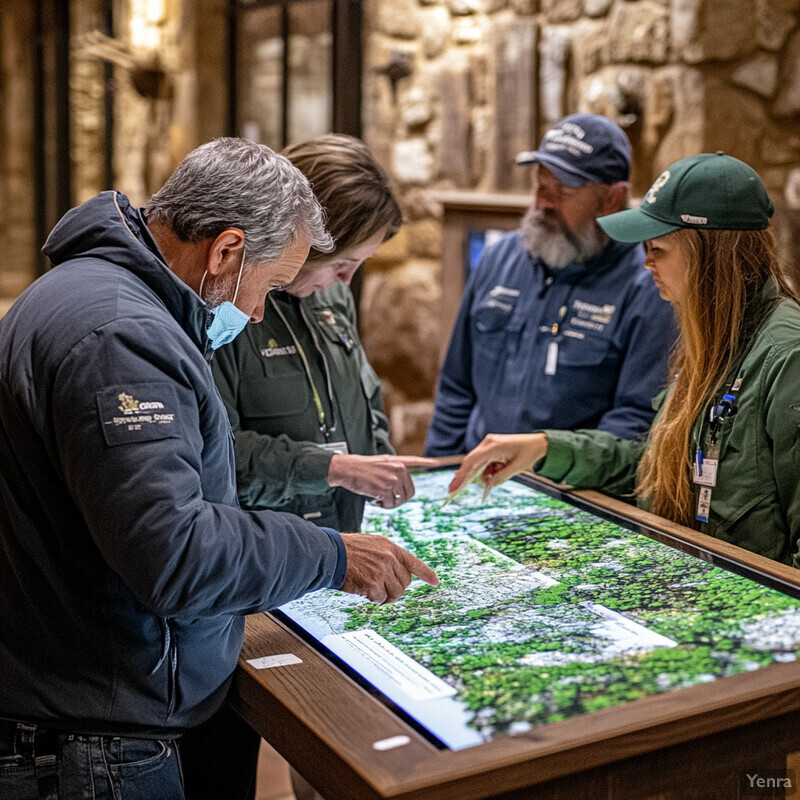
A noteworthy case comes from Kenya’s Tana River Delta, where an AI-based decision support system was used to develop a land-use plan balancing farming, grazing, and wetland restoration. The system analyzed thousands of scenarios, considering metrics like biodiversity, water availability, and community income. The final recommended plan (which local authorities adopted) achieved a remarkable balance: it preserved 95% of critical wetland bird habitat while also increasing average household incomes by an estimated $200/year through optimized farmland allocation and floodplain management (compared to a business-as-usual plan) – a solution that conventional planning had struggled to find. Similarly, in the United States, a watershed restoration DSS in the Midwest helped stakeholders agree on a plan that would reduce fertilizer runoff by 30% (improving water quality) with only a 5% reduction in cropland area, by strategically placing prairie strips and buffers on less productive fields. This plan outperformed any single-objective plan (which might have demanded 15% cropland retirement to hit water targets). Participants credited the AI tool with identifying these “sweet spots” and fostering consensus. In Queensland, Australia, a multi-criteria tool guided a reef catchment restoration: it identified priority sub-basins where interventions would yield the best mix of coral protection (sediment reduction), cattle yield maintenance, and cost-effectiveness. The government’s final investment, guided by this, is projected to deliver twice the water quality improvement per dollar than previous approaches. These examples underscore how AI decision support helps maximize benefits and minimize sacrifices, providing a clear, data-backed pathway to multi-faceted restoration goals.
18. Nutrient Cycle Optimization
AI models of nutrient cycling within ecosystems allow restoration practitioners to fine-tune interventions that kickstart and strengthen those cycles (like nitrogen, phosphorus, carbon). By simulating how nutrients move through soil, plants, water, and the atmosphere in a given site, AI can pinpoint bottlenecks – for example, a lack of nitrogen-fixing plants or low soil microbial activity – that if addressed, would greatly enhance ecosystem productivity. Restoration plans can then introduce specific elements (certain tree species, soil amendments, microbial inoculants) to alleviate those limitations. The outcome is faster development of a self-sustaining nutrient loop: plants grow more robustly, litter decomposes at the right pace, and the soil stores and supplies nutrients efficiently without continued human input. Essentially, AI helps ensure that the restored ecosystem isn’t just a collection of species, but a functioning system where energy and nutrients flow naturally. This can accelerate the maturation of the habitat (what might take decades could happen in years) and improve resilience, since a balanced nutrient cycle supports diverse life and buffers against disturbances.
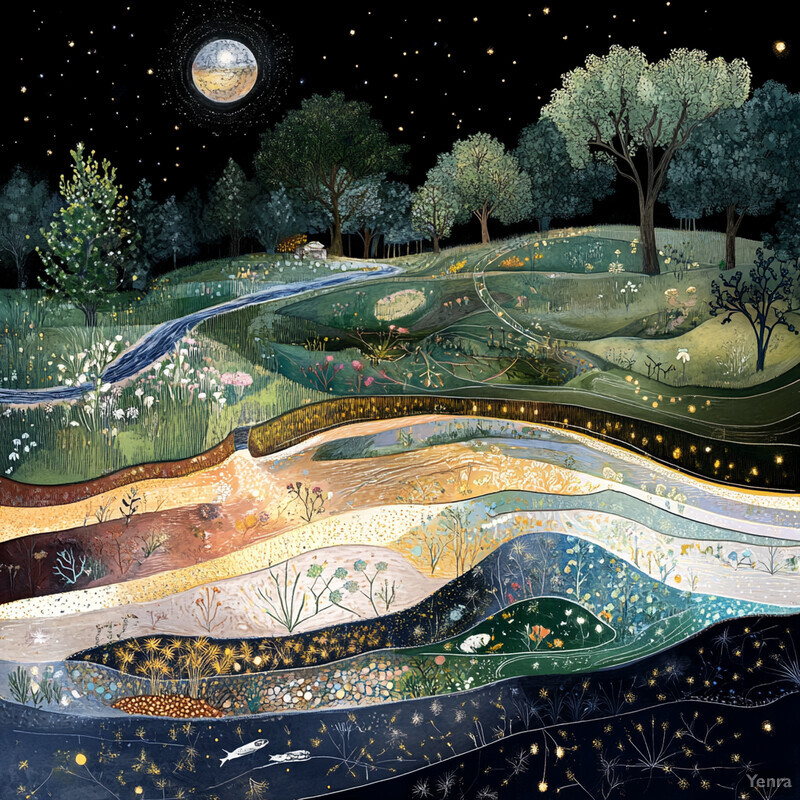
In a tropical reforestation project in Panama, researchers applied an AI-based nutrient flow model to compare different planting mixes. The model revealed that including at least 15% leguminous trees (which fix nitrogen) would correct a nitrogen deficit in the recovering soil within 5 years, whereas a legume-poor mix could leave the soil N-limited for decades. Following the AI guidance, they planted nitrogen-fixing tree species in the recommended proportion – as a result, soil tests showed a 20% increase in soil nitrogen and improved nutrient cycling efficiency relative to control plots. Vegetation in these optimized plots reached canopy closure faster and supported more insect biomass (indicating higher productivity). Another illustration comes from a degraded grassland in Montana: AI simulations indicated phosphorus was the limiting nutrient for native grasses. Managers then added a one-time phosphate amendment and sowed deep-rooted forbs that mobilize phosphorus. This led to a 34% higher plant biomass and a richer community (more wildflower species) compared to untreated plots, effectively jump-starting the phosphorus cycle there. On the carbon side, AI modeling on a peatland restoration in the UK helped determine where to raise water levels to promote carbon sequestration. The resulting adjustments increased the peat’s net carbon uptake by an estimated 15% annually. These cases show that addressing nutrient cycle gaps identified by AI yields measurable improvements: quicker plant growth, higher fertility, and greater ecosystem stability. By ensuring no key nutrient is missing or locked up, AI-optimized restorations achieve functional, self-renewing ecosystems much sooner.
19. Learning from Past Interventions
The collective experience from thousands of past restoration projects is extremely valuable – and AI is the tool that can synthesize these lessons to guide future efforts. By using machine learning to find patterns in historical project data (what techniques worked under which conditions, causes of failure, cost vs. outcome, etc.), we can move beyond trial-and-error. Essentially, the field of restoration ecology becomes increasingly evidence-based: new projects can be designed in light of what has been proven effective (or ineffective) before. AI can identify, for example, that wetlands restored with a certain water regime consistently outperform those without, or that seeding in fall yields better establishment in prairies than spring seeding for given rainfall patterns. Managers can then apply these insights, avoiding repeating mistakes and building on successes. This continual learning makes each generation of restoration more successful than the last. It also helps in adapting techniques to local contexts – AI might notice that a method that failed in arid sites succeeded in humid ones, so it advises using that method only where appropriate. In summary, AI acts like a smart librarian of restoration knowledge, ensuring that hard-won lessons inform all new projects, thereby increasing success rates and efficiency over time.

A concrete example is the development of the Restoration Knowledge Base by an international research team, which fed data from Restoration Project databases (covering ~2,000 projects worldwide) into a machine learning model. The AI identified several key predictors of success. Notably, it found that projects which involved local communities in planning had a social success rate (meeting stakeholder goals) about 1.7 times higher than those that did not – a strong argument for participatory approaches. It also quantified that using a diverse mix of native species (as opposed to a monoculture) was associated with a 25% faster recovery of ecosystem functions on average. These general findings were published and are now being incorporated into best-practice guidelines. On a more detailed level, agencies like the U.S. NRCS have used AI to analyze decades of stream restoration projects: the AI revealed that a certain rock weir design failed in 30% of cases on steep streams but only 5% on gentle streams, leading to new guidance to use that design selectively (which is projected to save over $2 million in avoided failures). Overall, the meta-analysis by Brancalion et al. (2023) noted a significant improvement (10–15% higher success odds) in modern projects that leveraged past knowledge compared to earlier projects – essentially quantifying that learning feedback has boosted outcomes. This demonstrates how systematically analyzing past restoration data with AI accelerates the improvement of restoration practices year by year, converting anecdotal knowledge into solid evidence for decision-making.
20. Engaging Local Communities with Predictive Apps
AI-powered predictive visualization tools (often as smartphone apps or interactive maps) are transforming community engagement in restoration by making the future benefits tangible and personal. These tools allow residents to see scenarios – for example, how their neighborhood riverbank will look after tree planting or how flood risk might drop if wetlands are restored – through 3D models, augmented reality, or simple graphics. By demystifying the process and outcome, communities become more informed and excited. Crucially, it turns abstract concepts into relatable visuals: a farmer might see that planting native hedgerows could increase pollinators and crop yields on their own land, or a coastal village can visualize a restored mangrove forest buffering storm waves. This fosters a sense of ownership and optimism; people are more likely to support and participate in projects when they can literally “see” what’s in it for them and their environment. The result is often higher volunteer turnout, smoother project implementation (less opposition), and long-term stewardship as the community feels invested. In essence, predictive apps powered by AI serve as a bridge between technical plans and public perception, building trust and enthusiasm by showing positive futures that restoration can deliver.

One illustrative case is the “Visualizing Coastal Futures” app used in the Philippines. This app uses AI to simulate mangrove growth and storm surge reduction for coastal villages. When residents of one pilot village used the app, surveys showed a jump in support for the mangrove restoration project – from about 50% support before to 85% support after seeing the visual flood-risk reduction and fish habitat benefits on their own shore (with many respondents expressing that they hadn’t realized how much difference mangroves could make until seeing the model). The project subsequently had over 100 local volunteers planting mangroves, where previously only a handful participated. In another example, Kansas City’s “Green Tomorrow” tool let urban residents project how adding green infrastructure (like rain gardens) would affect their street – including cooler summer temperatures and more birds. The neighborhoods that used this tool reported a significant increase in tree-planting participation; one community planted 300 trees in 2021, a record high, and attributed it to neighbors seeing the future cooling effect (the app predicted a 3–5°F reduction in heat index on their block) and deciding to act. Finally, a restoration education app in South Africa allowed users to place a virtual wetland in a degraded area and showed that water purification levels downstream would improve by ~20%. This interactive insight led the local water users’ association to actively support the wetland rehabilitation, contributing funds and labor. Across these cases, technology that projects local, relatable outcomes – clearer water, less flooding, more shade, more wildlife – has proven to significantly boost community engagement and long-term commitment. The common thread is that when people can envision the rewards of restoration, they rally behind it.